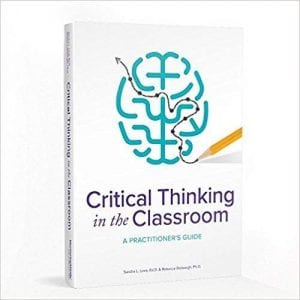
Data. Evidence. Proficiency. All terms we hear frequently in education….but there is a term missing. NORMING. Norming should be at the backbone of proficiency, data, and evidence. Norming is the process that is used to tell us where students stand in relation to others in a standardized testing environment (Rigby, iRead, PARCC), as well as the process of calibrating our evaluation to truly understand the evidence needed to hit the expectations of the standard.
Luckily, we don’t have to do much (other then find a way to fit all the testing into our schedules) to create the first definition of norming. Standardized tests have large student populations and the companies that process the results formulate the norms of each level of expectation and let you know where the “average” student for a grade band may fall. This data is helpful and can give us glimpses on where our students are based upon a larger population.
The second definition that includes calibrating our idea of proficiency for standards impacts us daily. We need to move norming to the front of our PLC conversations. Ask yourself some questions:
- Have you ever thought that you may be harder or easier on a standard than a person on your team?
- Did you ever question if your idea of proficiency or expectations were on target with those in the same grade level?
- Have you felt like you started off a new school year with a bunch of students and could tell who they had as a teacher based upon their abilities when they came to you?
- Have you had a transfer student come in that was way above or below where your expectations were only to find out they were receiving average grades at the previous school?
All of these questions align with having a common understanding of what it means for a student to be proficient in a standard. As the district heads into proficiency based feedback, we need to start asking ourselves to really define what does proficiency look like for a standard; not just for an individual teacher but also for all teachers in a building PLC and across the district. How can teachers and students identify proficiency? How do teachers calibrate what that proficiency looks like? The answer to these questions lies within norming.
The power of norming comes in collaboration with the people you work with. Many of you have gone through the norming process in writing recently. This is a long process and, quite honestly, is exhausting. It is not easy work, but it is important work. We have been examining a process that can be used for whole grade level teams within the district, but how often do you do this as a grade level? Could you give descriptions of what you need for evidence to show proficiency in each standard you evaluate? If another person in your PLC was asked would they have the same response? These answers do not come without having targeted discussions to create clarity. As teachers we are taught to make sure our students know the learning target so that they can take the proper steps to get where they need to go, and as teachers we deserve to have the same expectations for our own learning and planning. We need to know where we are headed and have that clear idea of what proficiency looks like for the standard we are evaluating.
So where do we go from here? How do you start this process? The answer…..slowly. Take it one subject area and one standard at a time. Put time on your calendar as a PLC to bring in student work. Allow other teachers to honestly evaluate where they believe the student is without extra input. This is not something that occurs over night. Norming doesn’t have an end date; instead norming needs to be an embedded best practice in our PLCs to allow us to have professional collaboration, growth, and awareness to best serve our students.
Image Credit: http://mucholderthen.tumblr.com/post/45530212842/x-ray-art-via-source-side-view-of-a-healthy

